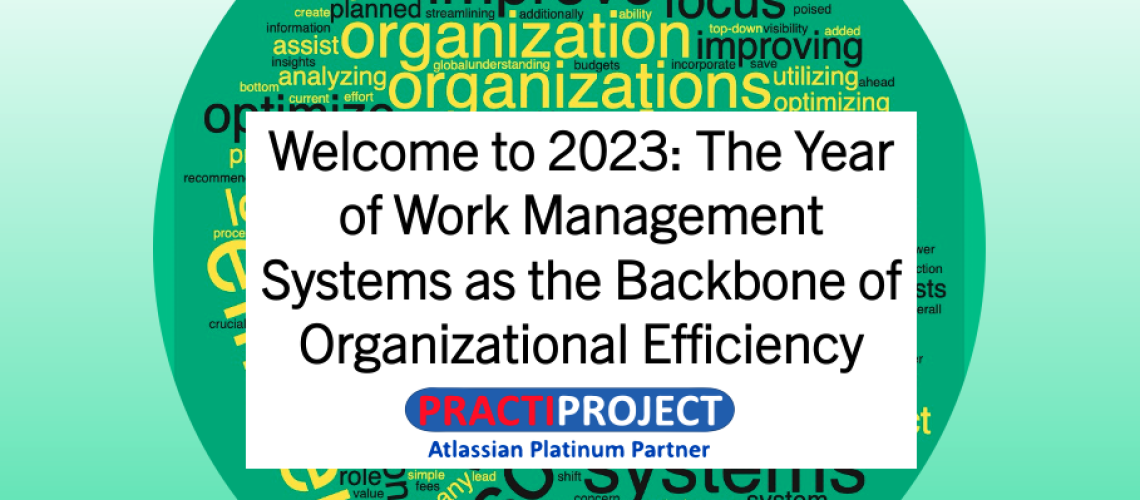Key Main Points:
- Work management systems will play a key role in optimizing resources and improving efficiency in 2023
- Consolidating IT tools and using AI algorithms can assist with resource optimization and identifying delays
- BI reports will be valuable for retrospectively analyzing KPIs, but the focus will be on improving planning and predictability
- Work management systems will be crucial for organizations looking to optimize resources and improve efficiency in 2023
As we enter 2023, it’s clear that companies will be looking for ways to increase efficiency and optimize their resources. With budgets and expenses being a concern for many organizations, a focus on cost saving will be top of mind. Work management systems are poised to play a key role in this effort, shifting from simple task and to-do list tools to becoming the backbone of organizational efficiency (1).
One way that work management systems can support this shift is by providing visibility into current and planned work, as well as real-time updates on the status of projects (2). This allows organizations to get a better sense of how their resources are being utilized, and identify areas for improvement. Additionally, gathering information from the bottom up, rather than just relying on top-down direction, can help to create a more comprehensive and accurate picture of the work being done (3).
Another area of focus for companies in the coming year will be the optimization of their IT resources (4). Many organizations have a proliferation of tools, which can lead to budget-busting license fees and a lot of manual work spent on data synchronization (5). By consolidating these tools and utilizing fewer main tools as the backbone of the organization, companies can save on both licenses and integration costs, while also streamlining their workflows.
One potential benefit of this consolidation is the ability to set up rule-based automation and incorporate AI algorithms to assist with global resource optimization. These tools can help to identify early warning signs of delays, provide recommendations for improving efficiency, and optimize resources on a larger scale (6).
While business intelligence (BI) reports will still be valuable for retrospectively analyzing key performance indicators (KPIs), the focus in 2023 will be on using these insights to improve planning and predictability (7). By understanding the discrepancies between planned and actual KPIs, organizations can work to close the gap and improve their efficiency.
Overall, it’s clear that work management systems will be an integral part of any organization looking to optimize their resources and improve efficiency in 2023. By utilizing these tools to their full potential, companies can streamline their workflows, reduce costs, and set themselves up for success in the coming year.
If your organization is looking to adopt these trends and improve your work management system, PractiProject can help. As an implementor and value added reseller of top solutions such as Jira and Asana, PractiProject has the expertise and experience to guide your organization through the process of adopting and optimizing a work management system. Contact PractiProject to learn more about how they can help your organization stay ahead of the curve in 2023.
For more information : [email protected]
References:
- “The Future of Work Management Systems” (2022). Forbes.
- “Maximizing Productivity with Real-Time Work Management” (2021). Harvard Business Review.
- “The Benefits of Bottom-Up Work Management” (2020). McKinsey & Company.
- “Optimizing IT Resources for Maximum Efficiency” (2020). MIT Sloan Management Review.
- “The Costs of Tool Proliferation in the Workplace” (2020). Deloitte.
- “The Role of Automation and AI in Resource Optimization” (2020). Forrester.
- “Using BI Reports for Improved Planning and Predictability” (2020). Bain & Company.





